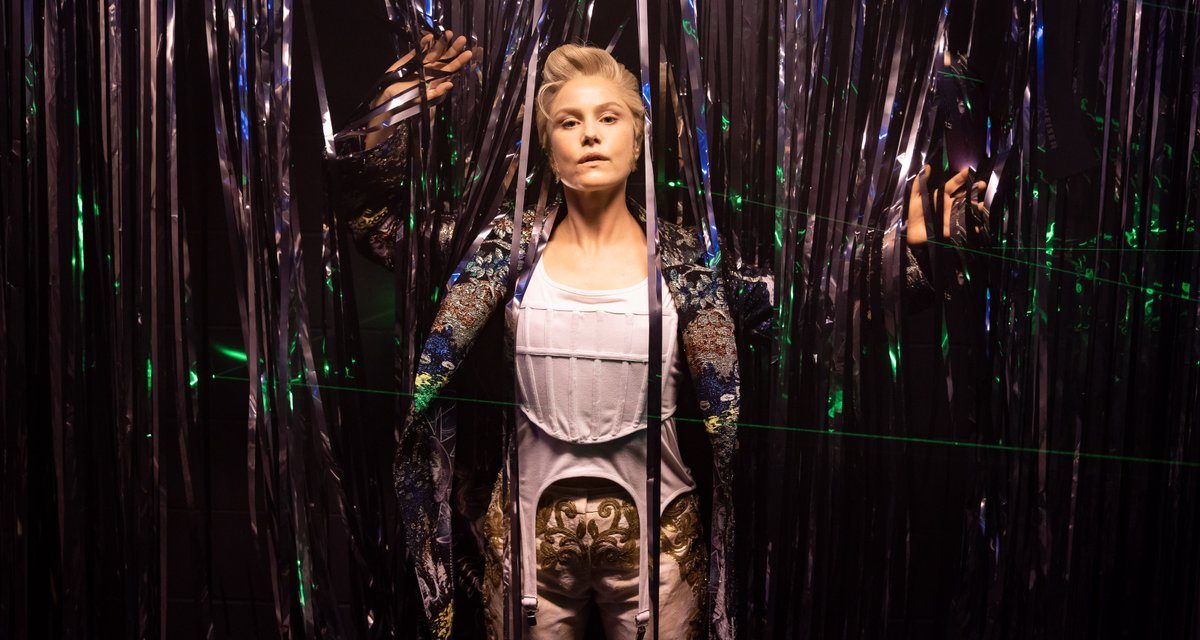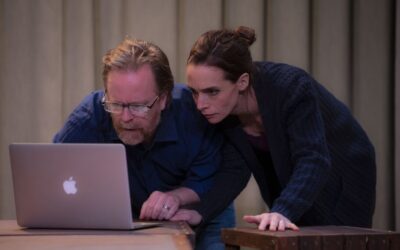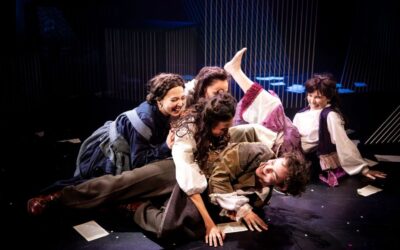By Jessica Taurins
The Picture of Dorian Gray, for those who are unfamiliar, is an endlessly-analysed Oscar Wilde novel written in 1891 about the horrors of self-obsession and vapid, mindless searches for pleasure at all costs – even at the cost of freedom and life itself.
For something written 130 years ago, that sounds familiar, does it not? The ceaseless drone of pop culture and reality TV is our search for mindless pleasure, and our handheld, eternally-online devices let us stare at ourselves as often as desired, as Gray does in his own handheld mirror. Perhaps in his time Wilde imagined a future where our bodies and our photos could be edited to remain young forever, or perhaps he simply warned his readers of the folly of trying to keep a ‘pure’ soul in an impure form.
Still, while perhaps the plot is eternal, this utterly unique, breathtaking performance has definitely never been seen before. Kip Williams (director and adapter of the story to the stage) has a deep, thorough understanding of the themes spread through Wilde’s novel and how they could be expressed through a one-person performance – as Wilde spent much of his time musing on people as eternal performers. And truly there could be no better actor to take the role of Dorian (plus 25 other characters) than Eryn Jean Norvill, someone who brings relentless, violent expression to the stage in her every quirked brow and cocked hip.

Even before the show starts, the audience are greeted by large portrait-oriented screens floating across the otherwise empty stage, the boards marred only by hundreds of position markers used by the cast and crew throughout the show. In this, the audience feels like Dorian himself, looking upon his own portrait and admiring his perpetual youth, then following his swift downfall into excess and death (spoilers!).
In playing every character, Norvill has so many opportunities to play with timing and performance. Some of her characters exist only on screens, pre-recorded performances she can interact with from her position on stage. Some others transition from stage to screen, introduced by Norvill herself in the live act and then appearing as larger-than-life recordings, almost godlike (or demonic) in their size as they tower over Norvill onstage.
Norvill’s range is impossibly exquisite. Her characters are satirical yet grounded, awkward and endearing, and in some cases uncomfortable and almost violating to experience. Yet despite their failures, Norvill pours herself into each and every one, thoughtfully bringing each to life as entire people, albeit all with the same face.
While Norvill and her immense talent could likely present all of these characters as unique individuals while wearing only some shapeless bodysuit, scenic and costume designer Marg Horwell delightfully complemented the performance with her costuming and design work. Horwell admits in an interview in the program that the costumes are not era-perfect (in fact some are definitively modern, like Gray’s 50s greaser quiff) but the intentions behind them are truly perfect in their own way.

Gray’s outfits evolve over time as his life becomes brighter and more excessive, while the other characters continue to age over the 20-year timeline of the story. Gray’s final form – a full bell-bottomed suit and corset, blossoming with flowers and golden ropes – is stunning in its brilliance and detailing, while the ties and ribbons of his previous outfits drape out from underneath, the desperate clinging objects of a previously good young man stifled by the excess he was drawn to.
In addition to anachronistic clothing the show contains multiple modern day references and comments, as well as entire sequences created via iPhone. Norvill manipulates selfies of herself as Gray into grotesque nightmares, like digital facelifts gone too far. Multiple times the phone is connected directly to the massive screens, allowing the audience to view characters with image filters over their faces, making them horrific or comical in the same way we brighten our smiles and enlarge our eyes to look ‘cuter’ in pictures. Modern commentary indeed.
As for the staging, there is no comparison to anything done before. The screens are both a reminder of the hidden portrait of Gray’s dying soul as well as an opportunity for even the furthest seat to see Norvill’s performance in the most intimate of fashions. The crew for the show are exceptionally skilled in their camera work, chasing Norvill across the stage and zooming on her every expression to broadcast across each screen. Positions are tight due to the presence of the pre-recorded characters for Norvill to perform alongside, yet the crew hit them all perfectly.

There is not one thing to fault about this performance, and the news of an international tour is thoroughly deserved. It’s one thing for a show to simply be created and performed, and another for a story to be so deeply understood by every person involved. This incarnation of The Picture of Dorian Gray could not be done by another director, another performer (although alternate performer Nikki Shiels would surely be a fantastic inclusion if Norvill were to be unable to perform), or another crew of camera operators. Each piece fits so snugly, from the emphasis on story beats to the rustle of streamers or the howl of a man who doesn’t understand why he’s dying. Williams, Norvill, and co. should be extremely proud of the show they have created, and ride along with it as it takes over the international stage.
Images: Dan Boud





